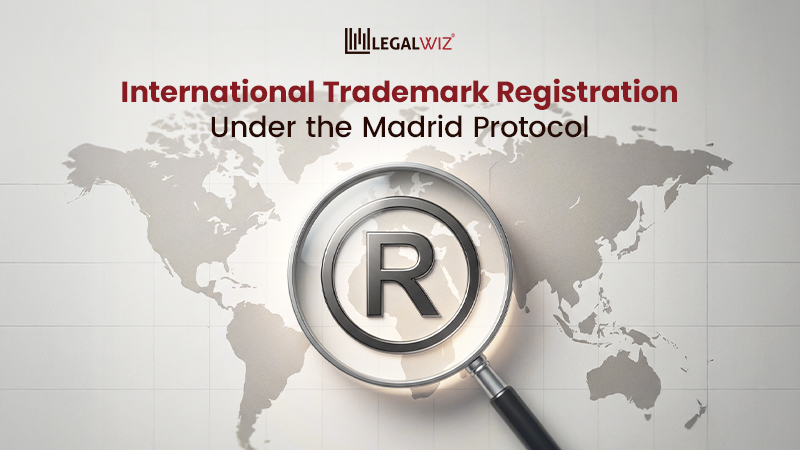All you need to know about Trademark Assignment Process in India
Trademarks are the most prominent way to protect brand identity in this competitive market. However, it also helps in growing your brand and business as a whole. One such way of growing your business is through transfer of trademark ownership in certain situations. Hence, to shed some light on this feature of trademarks, we will discuss the entire trademark assignment process in detail. Moreover, the trademark transfer process also helps in instant monetary benefits along with reduced costs of maintenance of IP rights. So, let’s dive into the process of trademark assignment, documents required and its fees in India.
What is the Trademark Assignment Process?
Trademark assignment is popularly also the transfer of trademark ownership. The term assignment denotes the transfer of complete or partial transfer of trademark rights from the assignor to the assignee. Moreover, once you learn how to transfer trademark ownership, you can easily start getting the monetary benefits of registering your mark. The trademark assignment process involves a multitude of factors, which we will discuss in this article.
Also Read: What is Trademark Objection Reply
Types of Assignment to Transfer Trademark Ownership
The following are the different types of trademark assignment processes in India:
Complete Assignment
In this type, all titles, rights, and interest in the trademark are also assigned from the assignor to assignee. Here, the assignee becomes the new owner of the trademark.
Partial Assignment
Many times, for business collaborations, only parts of trademark rights are assigned. When this happens, the trademark assignment process can include limitations of to specific geographical location, goods or services, or a specific duration as well. In this type of trademark assignment process, the whole ownership of a mark is not transferred.
Assignment with Goodwill
In this type of assignment process, not only the trademark ownership is transferred, but also the goodwill associated with it becomes the assignee’s.
Assignment without Goodwill
When the goodwill of a mark stays with the previous owner, the process of transfer is “assignment without goodwill”.
Also Read: Objection under Section 9 of Trademark Act
Essential Features of Trademark Assignment Process
The process of trademark assignment in India must fulfill the following characteristics:
Transfer of Ownership
Whether complete or partial, in transfer of trademark rights, transferring the ownership is a must.
No Objection of Prior Owner
The assignor should not have any objections with respect to this transfer of trademark ownership.
Written Agreement
To execute an assignment process in India, the assignor and assignee mandatorily need to enter into a written agreement.
Consideration
All trademark assignments happen in exchange for a consideration. Hence, there has to be a monetary consideration that the assignor obtains in exchange of the transfer of ownership. Moreover, providing the proof of this consideration amount also forms an important part of the trademark assignment documents.
Record
The transfer of rights must be recorded by the trademark registry. Hence, the parties will have to submit their written assignment deeds in the appropriate trademark form to the registry with the fees for trademark assignment.
Also Read: Trademark Registration Process in India
Documents Required for Trademark Assignment in India
Below is the list of documents required for the process of trademark rights transfer –
Power of Authority (from Assignor & Assignee)
Both the parties to the process, are required to submit an integral trademark assignment document, ie., power of attorney. The meaning of power of attorney is to authorize the legal professional to act on the parties behalf. This will help the parties in maintaining the terms of assignment deed without any disputes.
Trademark Assignment Agreement
From the list of all trademark assignment documents, most important is the assignment deed. It is a written contract that makes the transfer of trademark rights enforceable. Moreover, it is also a document that acknowledges the transfer of rights and responsibilities from one person to another.
This is the only document that clearly shows –
- The change of ownership of a trademark.
- The interest of the parties.
- The rights and obligations of parties.
The assignment agreement is enforceable in India if the parties duly execute it with appropriate stamp duties, notary and signature of the parties. The parties can keep a copy of the trademark assignment agreement. One has to submit thThe originals are to be submitted to the appropriate trademark registry to give effect to the change of title of the trademark.
No Objection Certificate (executed by the Assignor)
A no-objection certificate encapsulates the assignor’s wish to transfer the trademark ownership. Further, the trademark assignor also agrees that they have no objection to such a transfer of right.
Goodwill Certificate (given by the Assignor)
One needs this document when they are transferring the trademark owner’s goodwill along with the trademark. Basically, a goodwill certificate provides that the assignor has a right to all entitlements related to the qualitative value in a trademark and the assignor is transferring his/ her rights in a trademark to another person. Generally, this document allows the assignee to acquire all entitlements and values associated with the trademark and a right to unconditionally use the trademark for any of the goods and services.
Acceptance of Trademark Rights (provided by the Assignee)
Another important trademark assignment document is a document confirming the consent of the assignee with respect to the rights transferred to him.
Trademark Assignment Process
You can transfer trademark rights before or after the registration process is complete. Trademark rights can be transferred either before the trademark is registered or once the trademark is successfully registered. You should note that the trademark assignment documents requirement will remain the same in both situations. Hence, for transfer of rights before registration, you should file a request for trademark rights transfer through Form TM – M. Moreover, for trademark assignment after a successful trademark registration, Form TM – P is to be applicable along with the prescribed fee. It is always advisable to seek professional assistance while going for a trademark assignment process in India. Let’s see the step by step process below:
Identify Parties
The first step to transferring the ownership rights of a trademark is to identify all the parties to assignment. These parties are assignor and assignee.
Draft the Deed
Then, the parties collectively need to discuss the terms of their agreement and draft it accordingly.
Record Assignment With Registry
In this step, the parties need to submit the form applicable and pay the requisite fee for trademark assignment.
Notification From Registry
After submission of the form and details, the parties will receive a notification from the registry. This happens at least 8 to 9 months after the first submission. In this notification, the registry may either approve the assignment, or raise their concerns, if any. Once you resolve this query, the assignment process is complete.
Conclusion
In conclusion, the trademark assignment process is a simple way of transferring the ownership rights in a trademark from one party to another. This also makes it possible to transfer ownership from an individual to his new company, or from a defunct company to its shareholder. The assignment process makes it easy to manage the wealth of intellectual property rights. Besides, you can always reach out to the Legalwiz.in experts to simplify the process for you!
Frequently Asked Questions
Is a written assignment deed mandatory in transfer of trademark?
Yes, a trademark assignment deed must be in writing to make it enforceable.
What if the registry raises a query on assignment?
In case the registry issues a notice on your assignment request, you can reply to it by submitting a letter in the prescribed format.
Is trademark assignment possible before registration?
Yes, you can do it through submitting the form TM – M with prescribed fees.

Rohan Sharma
Rohan Sharma is a lawyer with a flair for writing. Rohan has a special interest in the domain of Intellectual Property Rights and possesses an extensive experience in the fields of trademarks, copyrights and industrial designs. Aiming to understand the intricacies of law as a concept and its symbiosis with advancing technology and changing societies, the author seeks to examine the nuances of law.







